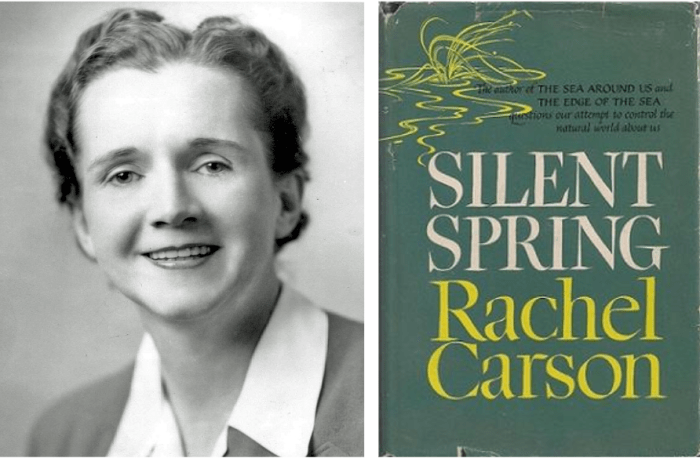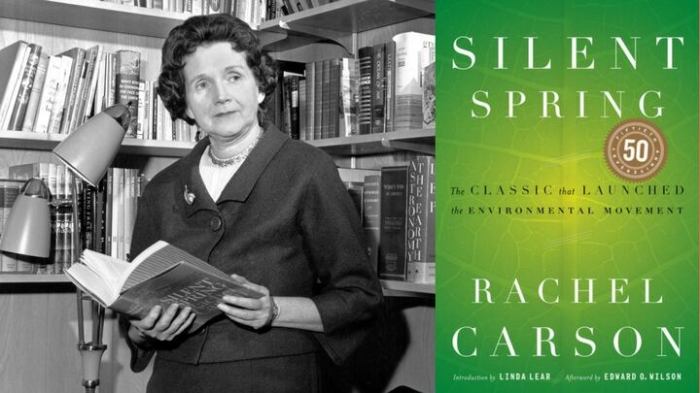A fable for tomorrow by rachel carson – In her groundbreaking work, “A Fable for Tomorrow,” Rachel Carson weaves a compelling narrative that explores the devastating consequences of environmental degradation and the urgent need for conservation. This seminal text has profoundly shaped environmental awareness and continues to resonate with readers today.
Carson’s fable unfolds in a haunting and evocative world where the unchecked pursuit of industrial progress has led to a barren and lifeless landscape. Through the eyes of a young boy named Billy, we witness the gradual decline of nature and the profound impact it has on human society.
Introduction
Rachel Carson, a renowned marine biologist and conservationist, published “A Fable for Tomorrow” in 1962. This influential work, written as a cautionary tale, profoundly impacted environmental awareness and sparked a global movement for environmental protection.
Key Themes and Messages
Environmental Degradation
Carson vividly depicts the devastating consequences of human actions on the natural world, such as pollution, deforestation, and overconsumption. She emphasizes the interconnectedness of ecosystems and warns of the potential for irreversible harm.
Human Responsibility
Carson challenges readers to recognize their role in environmental degradation and calls for individual and collective action. She argues that humans have a moral obligation to protect and preserve the planet for future generations.
Conservation
The book promotes the urgent need for conservation measures, including reducing pollution, protecting habitats, and managing resources sustainably. Carson stresses the importance of understanding ecological principles and adopting practices that promote the well-being of both humans and the environment.
Literary Devices and Techniques

Symbolism
Carson uses symbolism throughout the book to convey her message. The dying town of “Silent Spring” represents the consequences of environmental degradation, while the children’s inability to sing symbolizes the loss of innocence and hope.
Imagery
Vivid imagery is employed to create a visceral experience for readers. Carson’s descriptions of polluted landscapes, dying birds, and lifeless rivers evoke a sense of urgency and alarm.
Allegory
“A Fable for Tomorrow” is an allegory, a story with a symbolic meaning. The town of Silent Spring represents any community that has succumbed to environmental degradation, and the characters represent different aspects of human society and their impact on the environment.
Impact and Legacy

Immediate Impact
The book sparked widespread public outrage and led to the establishment of the Environmental Protection Agency (EPA) in 1970. It also played a significant role in the passage of environmental legislation, such as the Clean Air Act and the Clean Water Act.
Long-Term Influence, A fable for tomorrow by rachel carson
“A Fable for Tomorrow” continues to inspire environmental activists and policymakers today. It remains a powerful reminder of the importance of environmental protection and the need for collective action to address global environmental challenges.
Ecocritical Analysis

Representation of Nature
Carson’s portrayal of nature in “A Fable for Tomorrow” is both idyllic and cautionary. She celebrates the beauty and complexity of the natural world but also exposes the fragility and vulnerability of ecosystems.
Human-Environment Relationships
The book explores the complex relationship between humans and the environment. Carson argues that humans are not separate from nature but are an integral part of it. She emphasizes the need for a harmonious relationship between humans and the natural world.
Contribution to Ecocritical Theory
“A Fable for Tomorrow” has significantly influenced ecocritical theory, which examines the relationship between literature and the environment. Carson’s work has helped to establish the importance of environmental perspectives in literary analysis and has inspired other writers to explore environmental themes in their work.
FAQ Section: A Fable For Tomorrow By Rachel Carson
What is the main theme of “A Fable for Tomorrow”?
The central theme of the book is the urgent need for environmental conservation and the consequences of unchecked industrialization and pollution.
How does Carson use literary devices to convey her message?
Carson employs symbolism, imagery, and allegory to create a vivid and immersive narrative that underscores the devastating impact of environmental degradation.
What is the significance of “A Fable for Tomorrow” in environmental history?
The book played a pivotal role in raising public awareness about environmental issues and inspired the establishment of the Environmental Protection Agency (EPA) in the United States.